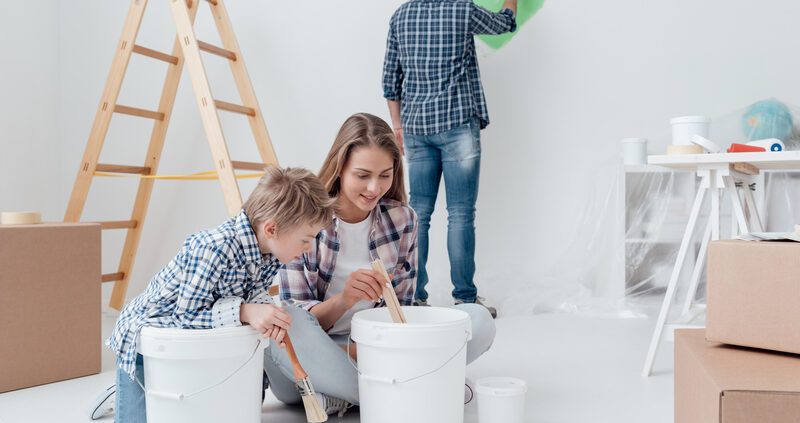What to Be Mindful of When Painting a Room
Adding a fresh coat of paint to your walls is one of the easiest ways to upgrade your home look. However, if you’ve never painted your own house before, you should be careful so you can be happy with your outcome. Here are a few things to be mindful of when painting a room.
Prepping Makes Painting Easier
First, prepping your walls before painting them actually makes the painting process a lot easier. If your walls are dirty and dusty, the fresh paint won’t adhere as it should and you won’t get a smooth, professional-looking finish. So, as you’re prepping your walls, make sure that you dust them, removing any cobwebs. Then, clean the walls with a mixture of water and soap to remove any grime or residue that might have built up over the years. Then you can fill in any holes or dents, as well as sand down any unwanted texture. A coat of primer can also help your paint to go down smoothly.
How Different Colors Affect the Outcome
Once you’ve prepped your walls, don’t get painting impulsively right away. First, take some time to consider how different colors will affect the outcome of your room. This doesn’t only refer to trendy colors that will go out of style in a few months. Your choice of paint color can actually affect the mood and perceived size of the room. Light shades will make the room look bigger while dark colors make it look smaller. So, choose a color that will be functional and aid the purpose of the room while still being stylish and aesthetically pleasing.
How to Protect Your Flooring and Furniture
Now that you’ve prepped your walls and chosen the paint color of your dreams, just make sure your flooring and furniture are protected before you get started painting. It can be helpful to pull any furniture away from the walls into the middle of the room. You can even cover your furniture with plastic or a spare sheet to protect them. Protect the edges of your flooring and ceiling with tape for a fresh paint line finish. If you’re worried about dripping paint, you can also cover the edges of the floor where you’ll be working with plastic or butcher paper. You could even use a spare newspaper or a canvas drop cloth to protect your flooring.
So, if you’re getting started on painting a room in your house a new color, remember these tips. Make sure that you prep your walls, choose a good color for your space, and protect your flooring and furniture. This will help you to get the most professional, pristine finish possible when DIYing your paint job.
Check out this article on how to improve your home where it really counts!




